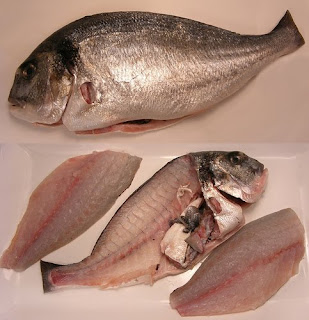Wild Edibles Seafood Update
Good day Chefs and Buyers,
Something really exciting is in our warehouse today. Jumbo Spot Prawns from British Columbia are in today. These are the choicest specimens packed out for the Japanese Market. They come 15/19 per 1 kilo box, that works out to about 7 pieces in a pound. Check out the photos on http://twitter.com/WildEdiblesFish and Facebook http://tinyurl.com/y9elztv Spot prawns are a very sustainable fishery from the icy cold North Pacific waters of Canada http://www.montereybayaquarium.org/cr/SeafoodWatch/web/sfw_factsheet.aspx?fid=23 Also from the same supplier we were able to buy the very best frozen at sea black cod. These fish are far superior to the land frozen fish some other companies sell. Try these sable out and you will see the difference.
Since we have been talking about west coast seafood we should mention that the halibut fishery has finally hit its stride with prices coming down and leveling off. We have brand new landings in today and our fish are awesome. Be careful of prices too good to believe though because there are some old fish in the market being sold at a loss, they are "chowder" fish at best.
Cod and wild striped bass are both solid, glistening and firm today. Lake fish are in and the walleye pike are fat and big from a good winter. Lots of whitebait is being landed in the St. Lawrence Seaway, a handful of these fried up would be our choice over fries any day. Sardines are in from Portugal, and we have one nice Mako to cut that came off of a local tuna boat.
Our featured oyster today is from our friend Rod Taylor. The Taylor family is usually associated with Taylor bay scallops, and they can be called the nurse maid of Nantucket's' but they also grows the iconic Nasketucket oyster. Nasketucket Bay is a rich salty marsh tucked inside the shoreline with teaming waters and eelgrass habitats for scallops and crab. Grown off of the sea floor the Taylors produce a clean ocean flavored oyster. This oyster has all of the traditional flavors that people expect from a Massachusetts oyster. For those of you missing Island Creeks this oyster deserves a look.
~Andrew Carnegie
Best regards,
Matthew Hovey http://www.linkedin.com/in/matthewhovey
718-433-4321 ext.121 / fax 718-433-4616 cell 718-679-0641
"Hand picked specialties from the Seas"
www.wildedibles.com
http://sustainablefishmonger.com


Comments